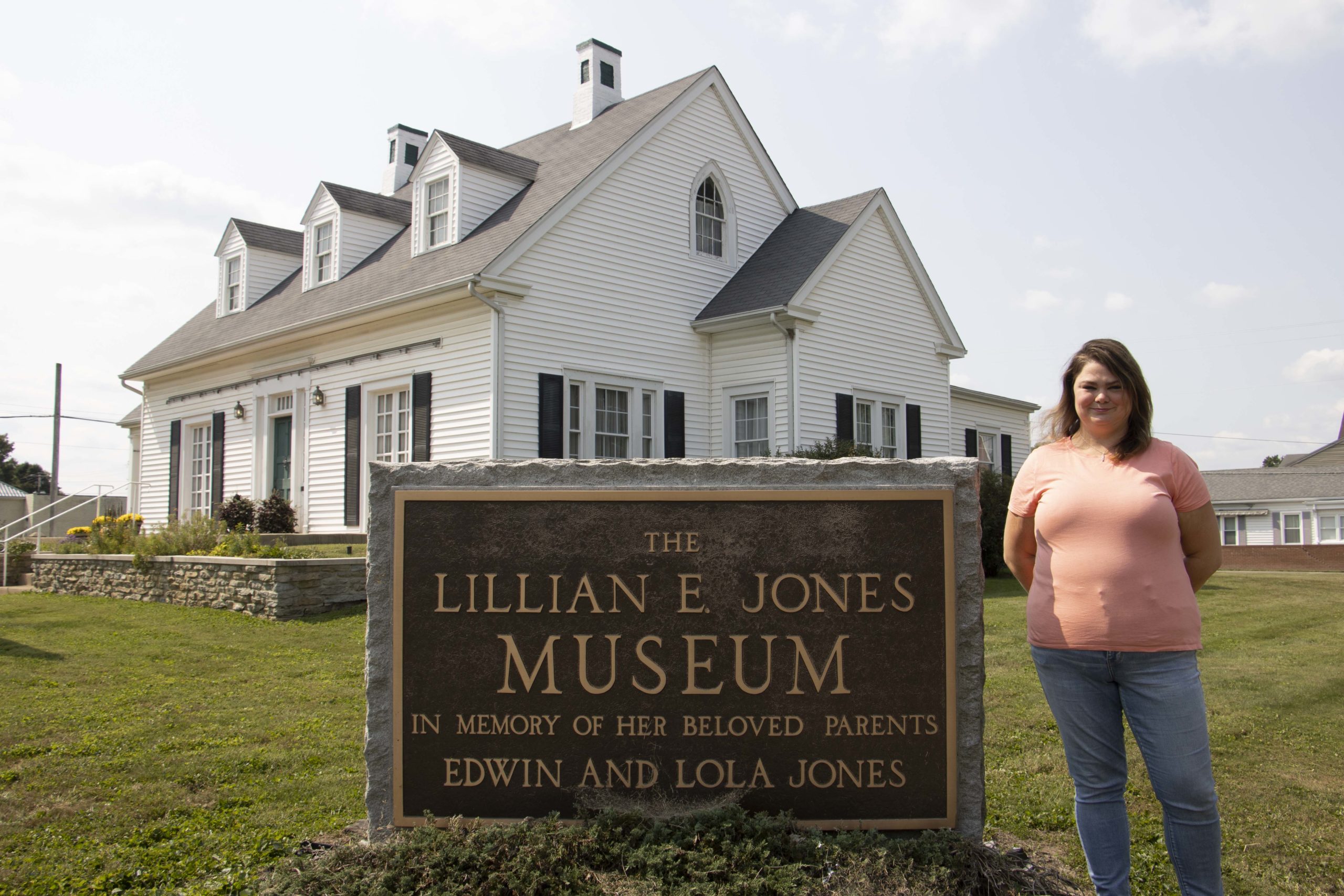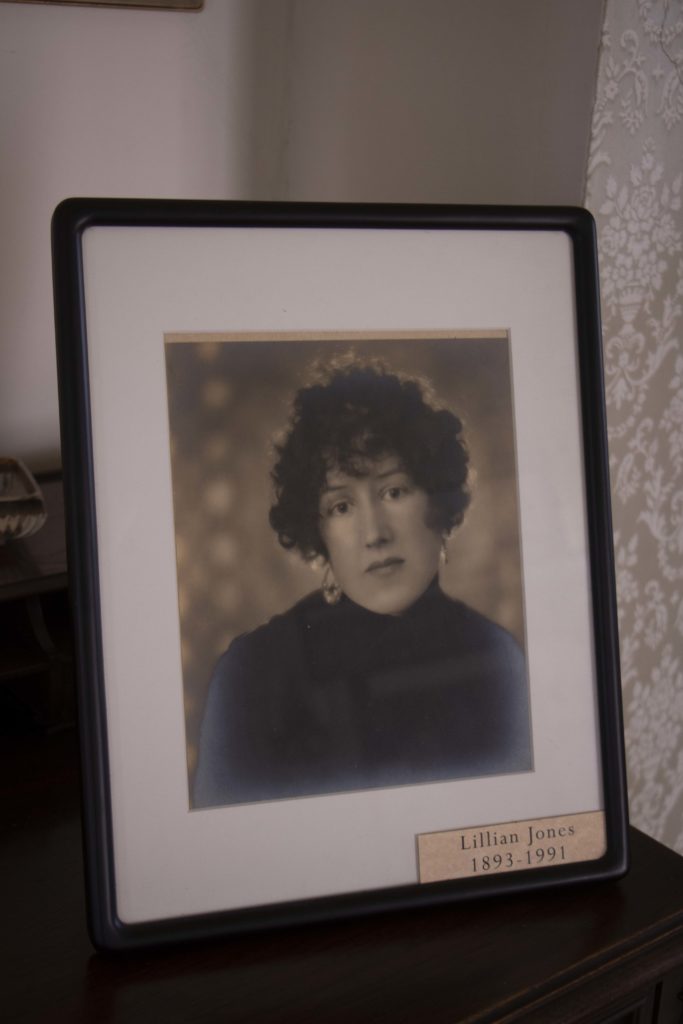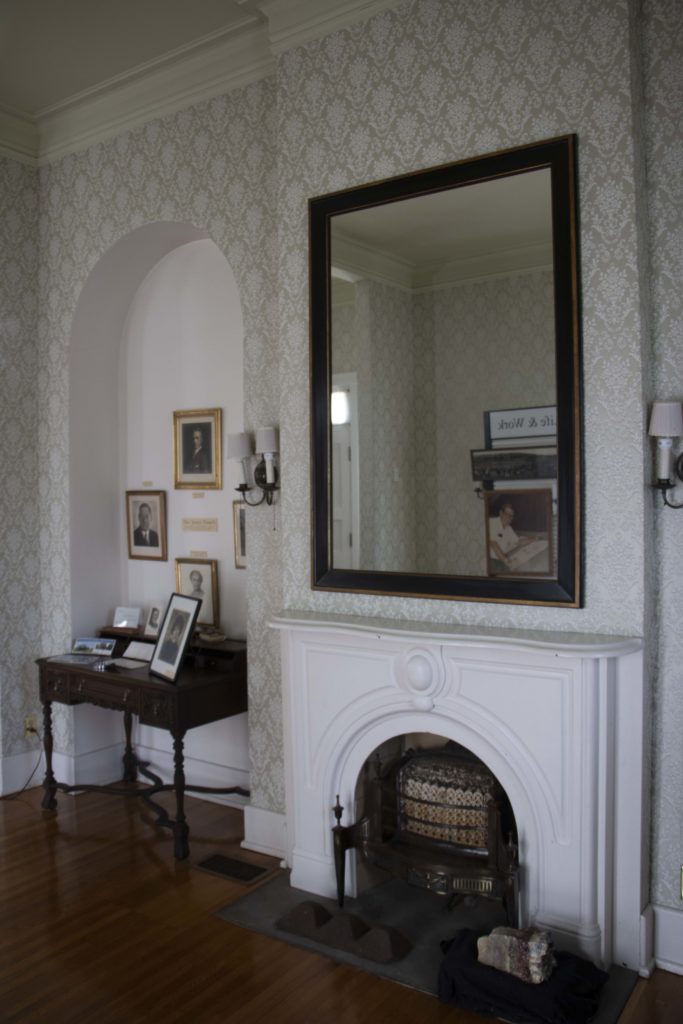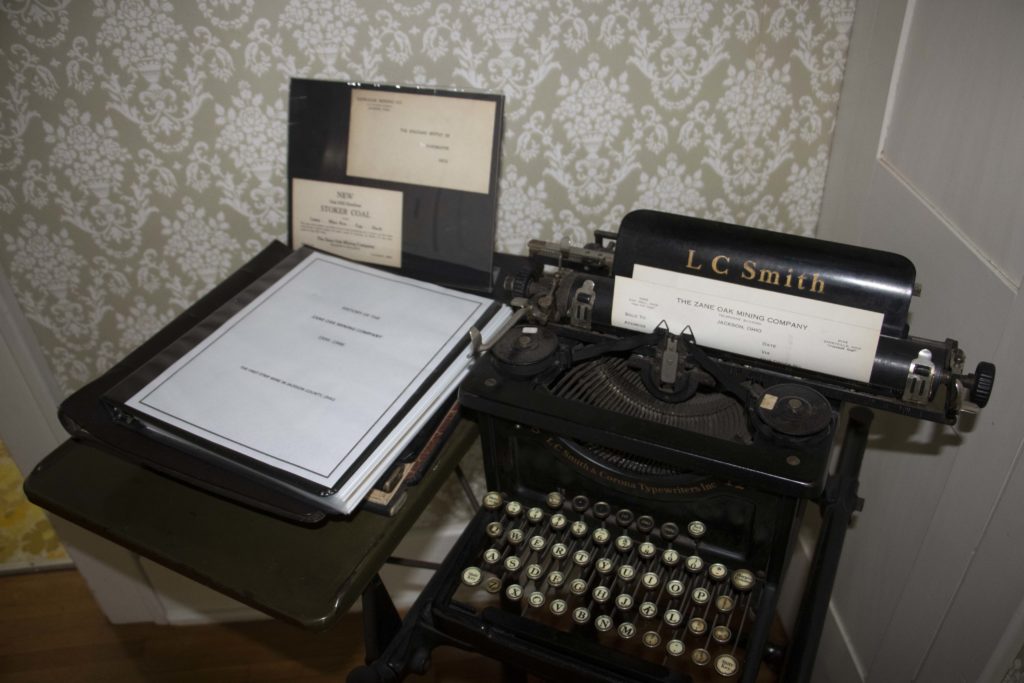
Lillian E. Jones Museum Director Ashley Aldrich stands proudly next to the museum sign dedicated to Jones’s parents on the front lawn.
The Lillian E. Jones Museum steadily overlooks the street, almost as omnipresent as its namesake. A pillar in the community, Lillian Jones spent her life in the Presbyterian Church, traveling around the world and collecting bits and pieces of her beloved Jackson’s history.
“She took pictures of everything and so many random people,” Ashley Aldrich, the museum’s current director, says. “The people that do talk about her [say] she was a force and she kind of did what she wanted and everyone else just accepted that.”
The open space inside invites guests to take a closer look at Jackson County history. Dressers and alcoves clad with faded photos, worn papers and objects once used in real-time beckon from each corner.

The Fletcher Benton room contains old letters from the artist’s longtime friendship with Jones and even some of his moveable sculptures. A Globe Iron factory whistle sits idly by in another room while the $30,000 soda can glints through its case across the room.
The house also served as the Jones family home from 1921 to 1995, the year it became a museum. Jones died in 1991. Her will specified that the home be turned into a museum.
Megan Malone, who served as the museum director for 10 years until August 2022, also grew up in Jackson and knew Jones through church. Malone says people knew not to mess with her.
“She was not prone to letting people into her life,” Aldrich says. ”You were very trusted if she let you into that circle, so those people feel very guarded of her legacy.”

Jones was known for being frugal and she rarely disclosed details of her own life. The Jones Museum website outlines some of Jones’s path, stating that she studied voice in France after graduating from boarding school in Indianapolis.
Later, she “took music” in New York, she cared for her ill mother in Jackson and spent winters in Florida when she wasn’t traveling.
Women’s clubs in Jackson, from literary clubs to study clubs, provided a sturdy backbone for recordkeeping before digital technology.
“Women do seem to be the ones that are the keepers of history; they’re the ones saving the clippings, pictures and putting them together in scrapbooks,” Aldrich says. “I love that we’ve got strong women and smart women carrying on the legacy of a very strong forceful woman.”

As an accidental testament to Jones, the museum has only ever had women serve as the director. The Jones Museum honors its namesake by maintaining a close-knit group who work and volunteer.
The Jones Museum remains prominent in the community just as Jones intended.
“I always say the museum exists because Lillian had a gift to give, and she put a bow on it, and she double knotted the bow,” Malone says.